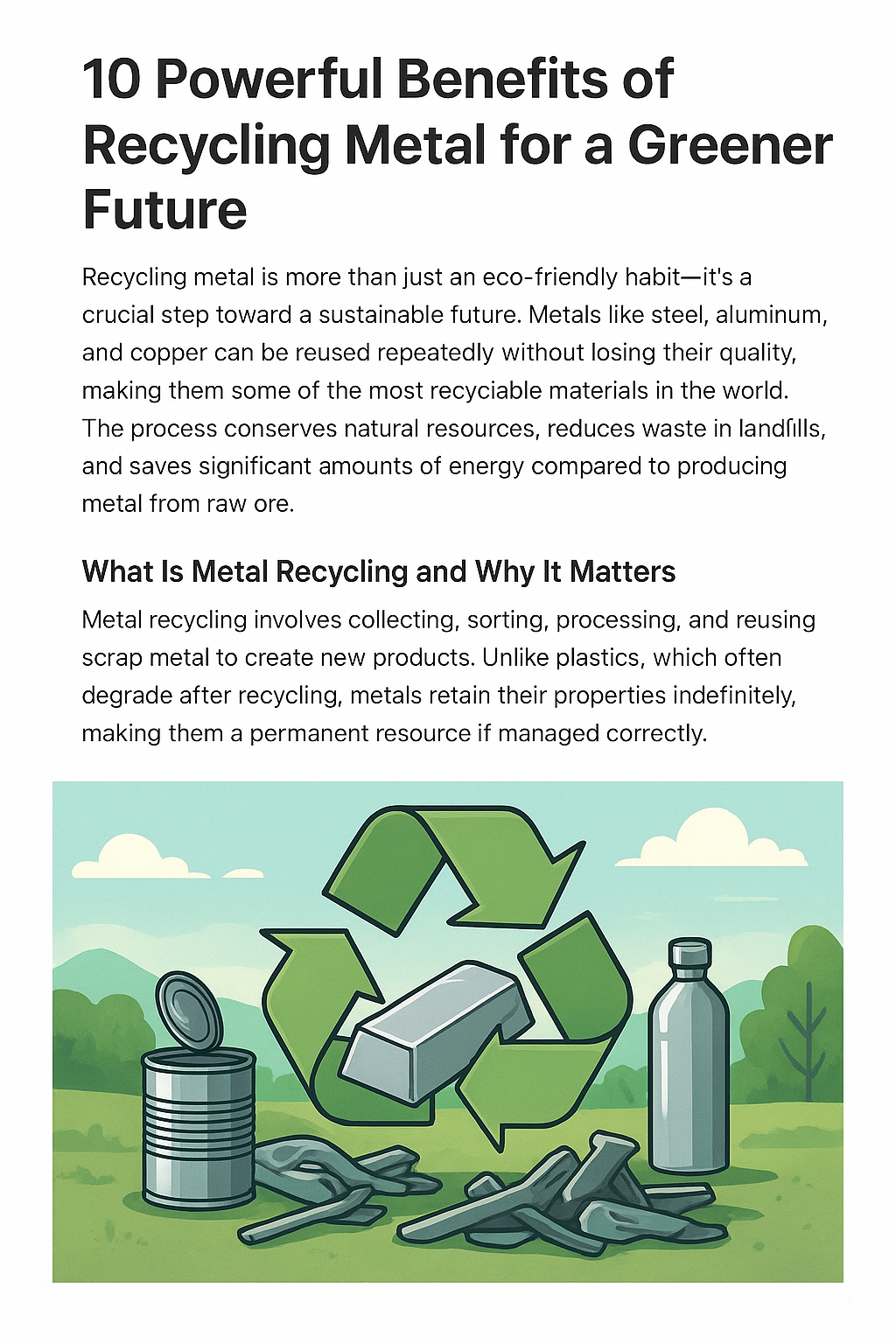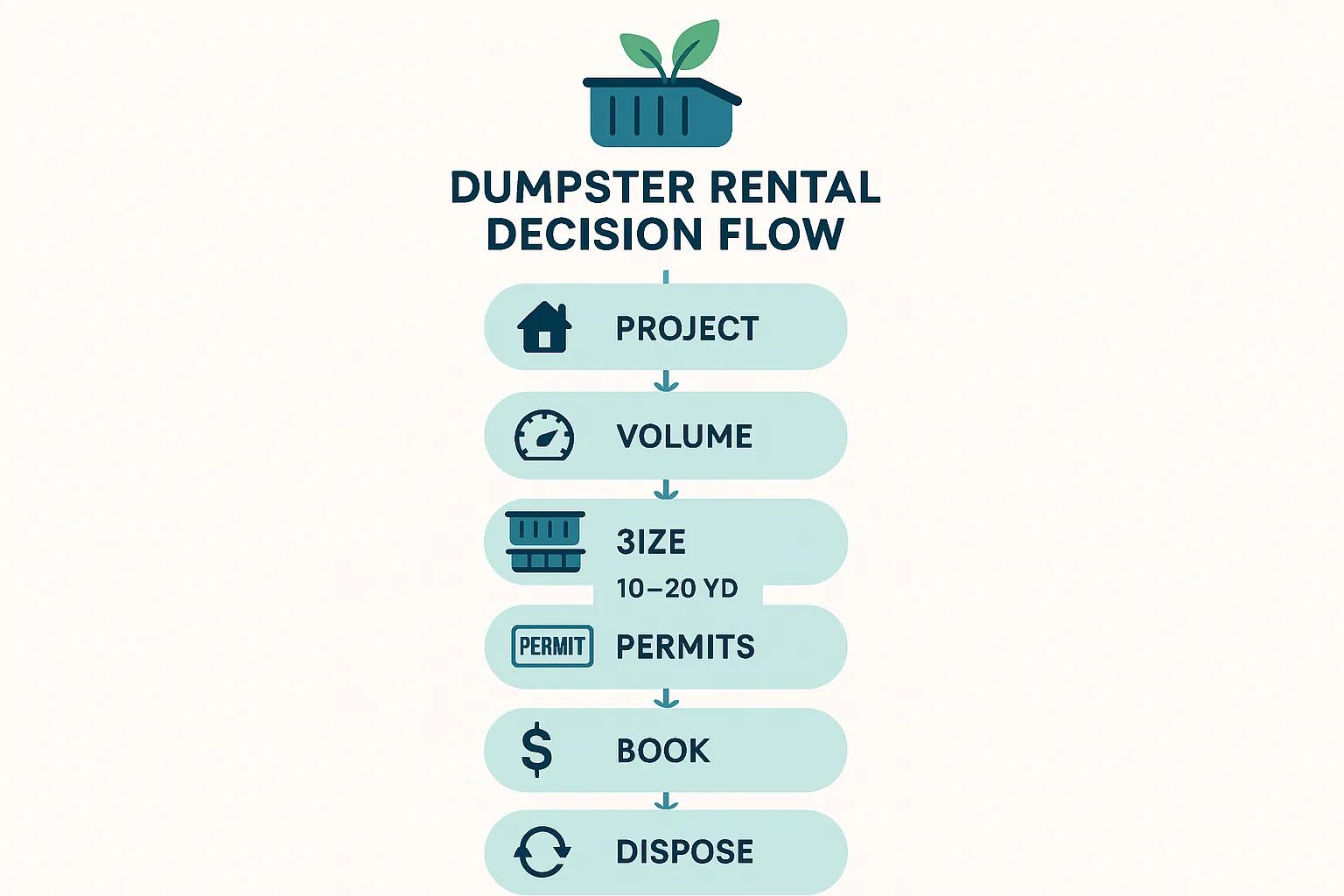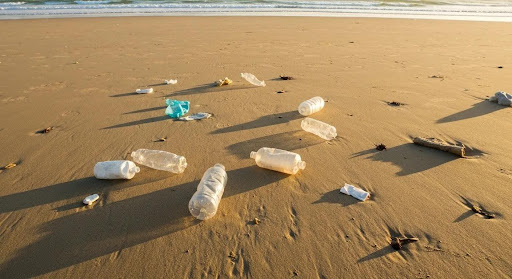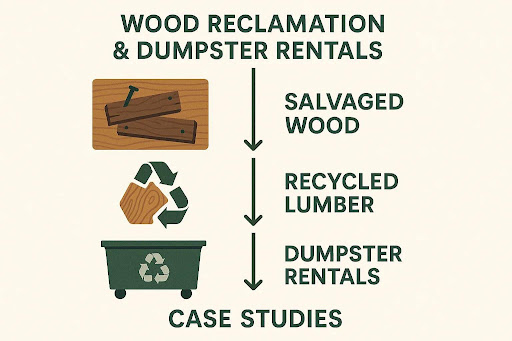
Introduction to Recycling Metal
Recycling metal is more than just an eco-friendly habit—it’s a crucial step toward a sustainable future. Metals like steel, aluminum, and copper can be reused repeatedly without losing their quality, making them some of the most recyclable materials in the world. The process conserves natural resources, reduces waste in landfills, and saves significant amounts of energy compared to producing metal from raw ore.
What Is Metal Recycling and Why It Matters
Metal recycling involves collecting, sorting, processing, and reusing scrap metal to create new products. Unlike plastics, which often degrade after recycling, metals retain their properties indefinitely, making them a permanent resource if managed correctly.
Historical Perspective: How Metal Recycling Began
Humans have been recycling metal for thousands of years. Ancient civilizations melted down bronze weapons and tools to make new items. During wartime in the 20th century, metal recycling became a patriotic duty, with citizens donating pots, pans, and scrap metal to aid manufacturing.
Environmental Benefits of Recycling Metal
Recycling metal has a massive impact on the environment, offering three key benefits.
Reducing Landfill Waste
Scrap metal takes decades—or even centuries—to decompose in landfills. By recycling, we free up space and prevent harmful substances from leaching into soil and groundwater.
Conserving Natural Resources
Every ton of recycled steel saves 1,100 kg of iron ore, 630 kg of coal, and 55 kg of limestone. By reusing metals, we reduce the need for destructive mining activities that harm ecosystems.
Lowering Greenhouse Gas Emissions
Producing new metal from recycled materials uses up to 95% less energy than mining and refining raw ore. This energy efficiency directly reduces greenhouse gas emissions, helping to combat climate change.
Economic Advantages of Metal Recycling
Metal recycling isn’t just an environmental win—it’s also an economic powerhouse.
Creating Jobs and Supporting Local Economies
The recycling industry employs thousands worldwide in collection, sorting, and processing facilities, providing stable income for many communities.
Lowering Production Costs for Manufacturers
Recycled metals are often cheaper than mined materials, allowing manufacturers to cut costs and keep consumer prices competitive.
Boosting the Scrap Metal Industry
Scrap yards and recycling centers benefit from a steady stream of materials, fueling a global market worth billions annually.
Types of Metals That Can Be Recycled
Nearly all metals are recyclable, but they fall into three main categories.
Ferrous Metals (Steel, Iron)
These magnetic metals are widely used in construction and manufacturing. Recycling them reduces the need for high-energy steel production.
Non-Ferrous Metals (Aluminum, Copper, Brass)
These metals are lightweight, corrosion-resistant, and valuable. Aluminum cans, for example, can be recycled and returned to shelves in as little as 60 days.
Precious Metals (Gold, Silver, Platinum)
Found in electronics, jewelry, and catalytic converters, these metals are highly valuable and often recovered through specialized recycling processes.
The Metal Recycling Process Explained
Metal recycling follows a series of carefully planned steps to ensure efficiency and quality.
Collection and Sorting
The process starts with gathering scrap metal from households, businesses, construction sites, and manufacturing plants. Specialized magnets and advanced sorting machines separate ferrous from non-ferrous metals.
Processing and Melting
Once sorted, metals are shredded or compacted to optimize furnace efficiency. Melting occurs in large industrial furnaces, with temperatures tailored to each metal type. This stage consumes far less energy than producing metals from ore.
Purification and Manufacturing
To ensure quality, metals undergo purification processes like electrolysis or chemical treatments. Once pure, they’re shaped into bars, sheets, or coils for use in new products.
Challenges in Metal Recycling
Despite its benefits, metal recycling faces several obstacles.
Contamination Issues
Food residue, mixed materials, and hazardous coatings can make recycling harder and more expensive.
Market Fluctuations
Metal prices depend heavily on global supply and demand, making the industry vulnerable to sudden shifts.
Infrastructure Limitations
In some regions, lack of proper recycling facilities means valuable scrap still ends up in landfills.
Innovative Technologies in Metal Recycling
New tech is making metal recycling faster, cleaner, and more profitable.
AI-Powered Sorting Systems
Artificial intelligence can identify metals with pinpoint accuracy, speeding up sorting and reducing contamination.
Advanced Smelting Techniques
Modern furnaces use renewable energy and high-efficiency designs to lower emissions and improve output.
Circular Economy Approaches
In a circular economy, products are designed for easy disassembly, making recycling simpler and more cost-effective.
How Individuals Can Contribute to Metal Recycling
Every person has the power to make a difference.
Household Recycling Tips
Separate metal waste from other materials and clean food containers before recycling.
Partnering with Scrap Yards
Local scrap yards often pay for valuable metals like copper, aluminum, and brass.
Community Recycling Programs
Join or organize local recycling drives to encourage neighbors to participate.
Future of Metal Recycling
The next decade promises exciting developments in sustainability.
Sustainable Industrial Practices
More companies are switching to 100% recycled metals in their production lines.
Global Recycling Trends
Countries are adopting stricter recycling mandates, driving higher recovery rates.
Policy and Regulation Support
Governments are offering incentives and penalties to encourage proper recycling practices.
FAQs About Recycling Metal
Q1: Can all metals be recycled?
Almost all metals can be recycled, though some require specialized processes.
Q2: How many times can metal be recycled?
Indefinitely—metals don’t lose their properties during recycling.
Q3: Is recycling metal profitable?
Yes, especially for non-ferrous and precious metals.
Q4: What’s the most recycled metal?
Steel, due to its widespread use in construction and manufacturing.
Q5: How can I find a recycling center near me?
Use local government directories or online tools like Earth911.
Q6: Does recycling metal save energy?
Yes—up to 95% less energy than producing metal from raw ore.
Conclusion: Building a Sustainable Future Through Metal Recycling
Recycling metal is a win-win for the planet and the economy. It conserves resources, reduces pollution, creates jobs, and supports a circular economy. Whether you’re an individual sorting aluminum cans or a company implementing green manufacturing, every action counts toward a cleaner, more sustainable future.



